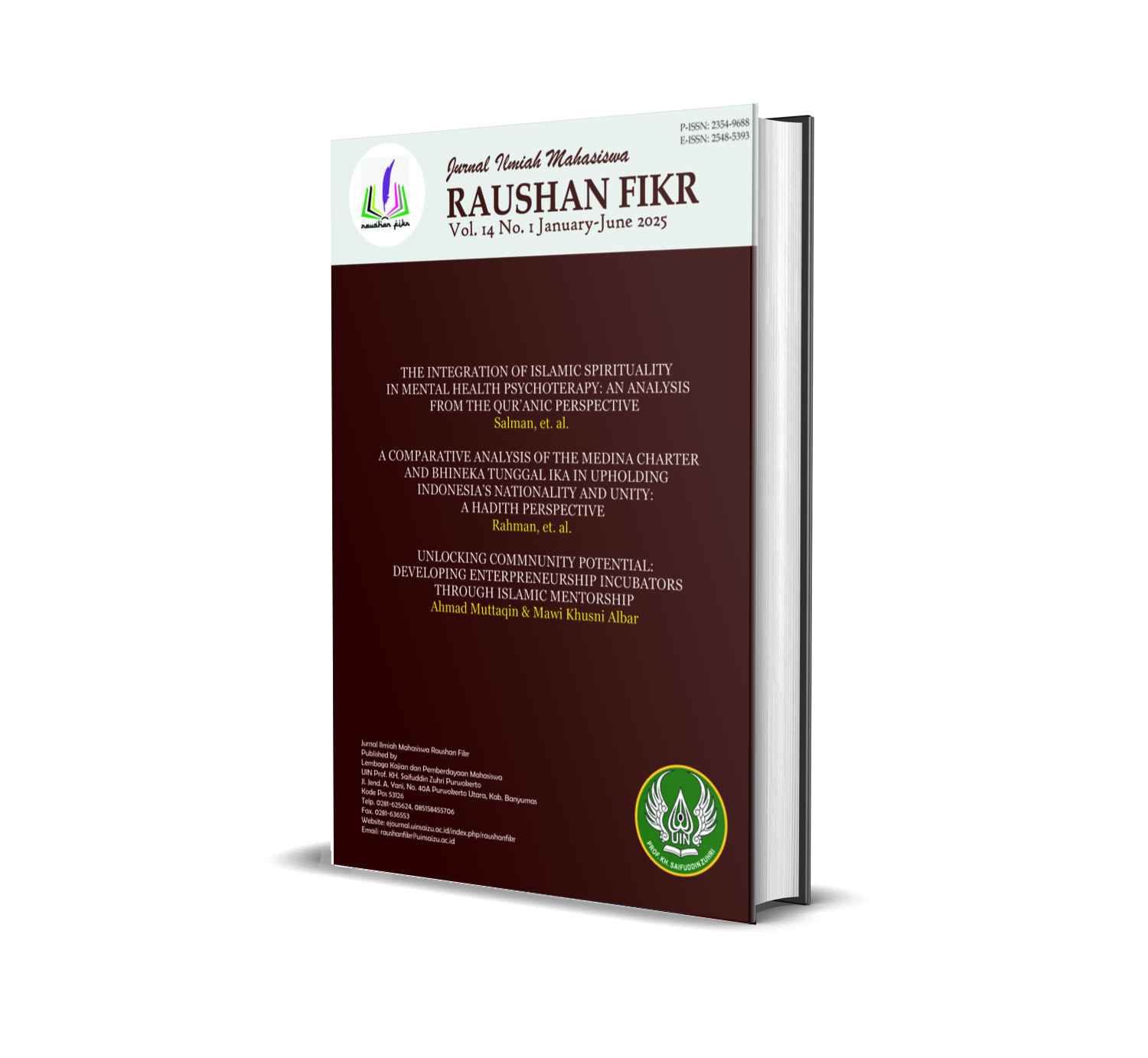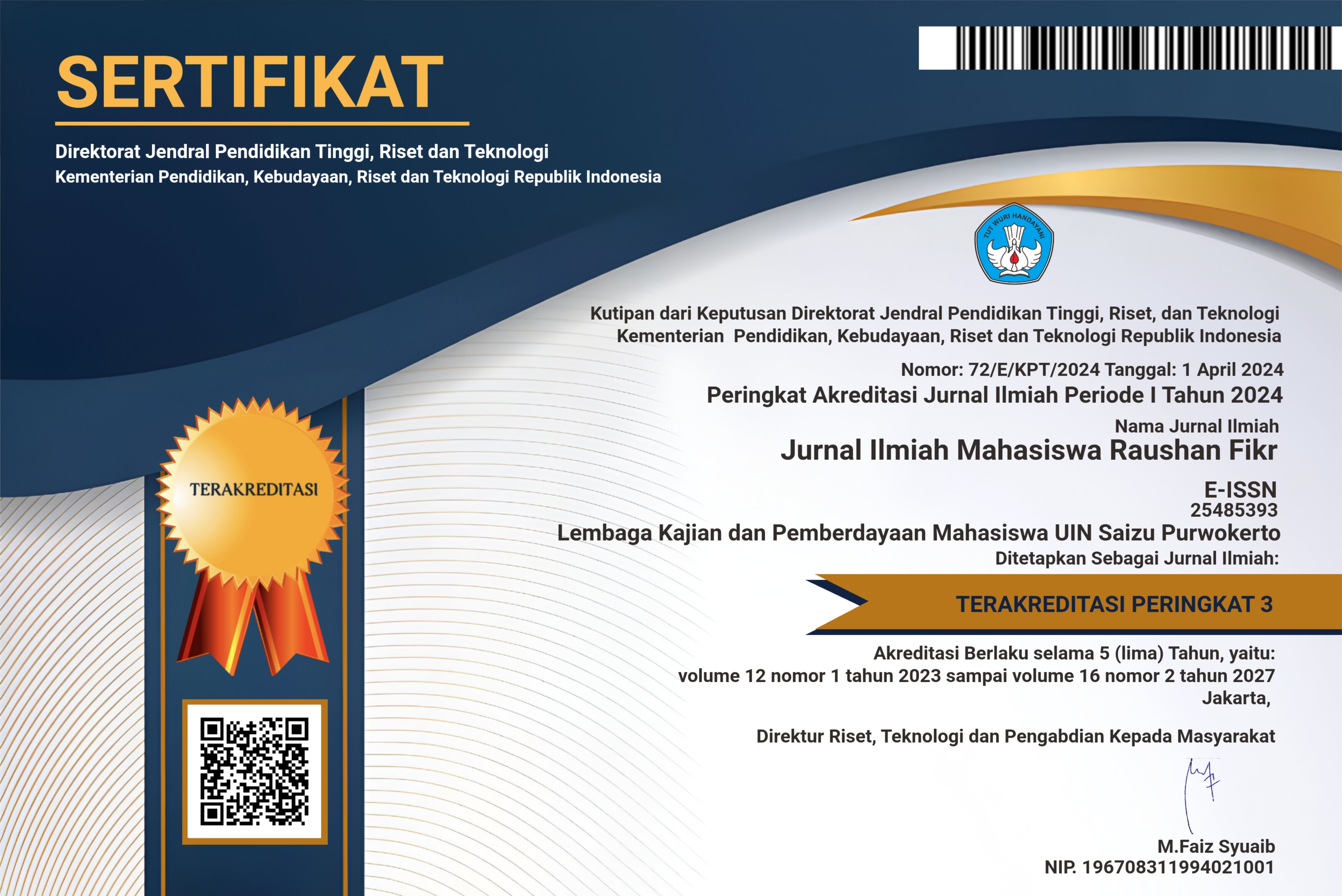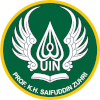Cultivating Middle-Class Prosperity: Exploring The Socioeconomic Drivers in Indonesia’s Sharia Economy
DOI:
https://doi.org/10.24090/jimrf.v14i1.13532Keywords:
Middle-Class Growth, Investment, Islamic Financing, Inclusive DevelopmentAbstract
This study aims to examine the key determinants driving the growth of the middle class in Indonesia through the lens of Islamic economics, with particular emphasis on education, Islamic capital market investment, and Islamic bank financing. Employing a quantitative approach, the research utilizes multiple linear regression analysis on time series data spanning from 2021 to 2024, processed using SPSS 25. The findings reveal that all three variables exert a statistically significant and positive impact on middle-class expansion. Education contributes to human capital development and employability; Islamic capital market investment fosters asset accumulation and equitable wealth distribution; and Islamic bank financing enhances access to productive capital, particularly for small-scale entrepreneurs and transitioning lower-income households. Collectively, these factors account for 87.4% of the variance in middle-class growth, underscoring their pivotal role in shaping the Islamic economic ecosystem. The results underscore the imperative to elevate financial literacy, broaden inclusive education, and improve the accessibility of Sharia-compliant financial instruments to accelerate and sustain middle-class advancement. Future research is encouraged to incorporate sociocultural and regional variables—such as urban-rural dynamics, religious practices, and digital financial behavior—to capture more nuanced influences and further validate the resilience of the Islamic economic model in fostering inclusive developmentDownloads
References
Alya, U., Rahman, T., Ekonomi, S., Fakultas, S., Unoiversitas, K., Madura, T., Studi, P., Syariah, E., Keislaman, F., & Trunojoyo, U. (2024). Ulka Alya. 10(1), 74–84.
Arif, S. A. (2024). Analisis Peran Pembiayaan Mikro Syariah Dalam Meningkatkan Kesejahteraan Pelaku Usaha Mikro Kecil Dan Menengah (UMKM). JIMP: Jurnal Ilmiah Manajemen Profetik, 2(2), Article 2. https://doi.org/10.55182/jimp.v2i2.526
Ash-Shiddiqy, M., Munajar, M., & Wibowo, M. G. (2023). Pengaruh Digitalisasi Ekonomi Terhadap Pertumbuhan Ekonomi Syariah Di Indonesia. Jurnal Ilmiah Mahasiswa Raushan Fikr, 12(2), 216–226. https://doi.org/10.24090/jimrf.v12i2.8528
Badan Pusat Statistika. (2023). Pendidikan dan Kesehatan, jembatan keluar dari jeratan Kelas Menengah. DATAin, 3(1), 1–9.
Badarinza, C., Balasubramaniam, V., & Ramadorai, T. (2019). The Household Finance Landscape in Emerging Economies (SSRN Scholarly Paper 3516521). Social Science Research Network. https://doi.org/10.1146/annurev-financial-110118-123106
Bastomi. (2023). Faktor Penentu Minat Investasi di Pasar Modal Syariah: Studi Pada Generasi Z Kota Malang. Widya Cipta: Jurnal Sekretari Dan Manajemen, 7(2), 185–196. https://doi.org/10.31294/widyacipta.v7i2.16255
Bastomi, M., & Nurhidayah, N. (2023). Faktor Penentu Minat Investasi di Pasar Modal Syariah: Studi Pada Generasi Z Kota Malang. Widya Cipta: Jurnal Sekretari Dan Manajemen, 7(2), Article 2. https://doi.org/10.31294/widyacipta.v7i2.16255
Becker, G. S. (1964). Human Capital: A Theoretical and Empirical Analysis with Special Reference to Education, First Edition. NBER. https://www.nber.org/books-and-chapters/human-capital-theoretical-and-empirical-analysis-special-reference-education-first-edition
Birdsall, N. (2010). The (Indispensable) Middle Class in Developing Countries; or, the Rich and the Rest, Not the Poor and the Rest (SSRN Scholarly Paper 1693899). Social Science Research Network. https://papers.ssrn.com/abstract=1693899
Block, W. E. (2023). Trickle-Down Economics. Journal of Private Enterprise, 38(4), 72–79. https://doi.org/10.2307/j.ctt7rg7m.9
BPS, B. P. S. (2024). Laju Pertumbuhan Penduduk—Tabel Statistik. https://www.bps.go.id/id/statistics-table/2/MTk3NiMy/laju-pertumbuhan-penduduk.html
Brown, P., Lauder, H., & Ashton, D. (2010). The Global Auction: The Broken Promises of Education, Jobs, and Incomes. Oxford University Press. https://doi.org/10.1093/acprof:oso/9780199731688.001.0001
Darwin, K., Haliah, H., Nirwana, N., Syamsuddin, S., & Kusumawati, A. (2024). The Implementation of Governmental Accounting Standards and the Quality of Financial Statements. Jurnal Ilmiah Mahasiswa Raushan Fikr, 13(1), 256–261. https://doi.org/10.24090/jimrf.v13i1.11297
Daulay, A. H., Asmuni, A., & Harahap, I. (2023). Investment, Islamic Human Development Index and Banking Financing on Economic Growth and Their Impact on Labor Absorption. Amwaluna: Jurnal Ekonomi Dan Keuangan Syariah, 7(2), 339–346. https://doi.org/10.29313/amwaluna.v7i2.12493
Demirgüç-Kunt, A., Klapper, L., Singer, D., Ansar, S., & Hess, J. (2020). The Global Findex Database 2017: Measuring Financial Inclusion and Opportunities to Expand Access to and Use of Financial Services*. The World Bank Economic Review, 34(Supplement_1), S2–S8. https://doi.org/10.1093/wber/lhz013
Dewi, K. (2020). UU SISDIKNAS No.20(2003). Indikator Tingkat Pendidikan, 13–37.
Doner, R. F., & Schneider, B. R. (2016). The Middle-Income Trap: More Politics than Economics. World Politics, 68(4), 608–644. https://doi.org/10.1017/S0043887116000095
El-Gamal, M. A. (2006). Islamic Finance: Law, Economics, and Practice. Cambridge University Press.
Gill, I. S., Kharas, H. J., & Bhattasali, D. (2007). An East Asian Renaissance: Ideas for Economic Growth. World Bank Publications.
Global Economic Prospects, January 2025. (n.d.).
Hammell. (2021). On Becoming a Global Citizen. Internationalizing Higher Education, 213–229. https://doi.org/10.1007/978-94-6209-980-7_14
Hasbiah, Karfin, & Wairooy, F. A. (2024). The Impact of FDI, Portfolio Investment, Tourism, Inflation, Net Exports, and Exchange Rate on Asean-6 Balance of Payments: The Moderating Role of Corruption Perception Index from an Islamic Perspective. Jurnal Ilmiah Mahasiswa Raushan Fikr, 13(2), 292–309. https://doi.org/10.24090/jimrf.v13i2.11561
Hasibuan, H. R., Imsar, & Harahap, R. D. (2023). Analisis Faktor-Faktor Penyebab Terjadinya Wanprestasi Dalam Penyelesaian Produk Pembiayaan Multijasa Di PT. Bprs Al-Washliyah Krakatau. Sains Dan Teknologi, 5(2), 565.
Hill, H. (2021). What’s happened to poverty and inequality in indonesia over half a century? Asian Development Review, 38(1), 68–97.
Ichsan, R. N., Syahbudi, M., & Nst, V. F. H. (2023). Development of Islamic Human Resource Management in The Digital Era For MSMEs and Cooperatives in Indonesia. IQTISHODUNA: Jurnal Ekonomi Islam, 12(2), 497–512. https://doi.org/10.54471/iqtishoduna.v12i2.2336
KSEI, K. (2024). PT Kustodian Sentral Efek Indonesia—Data Statistik KSEI. https://www.ksei.co.id/publications/Data_Statistik_KSEI
Liu, Q., & Wang, L. (2021). T-Test and ANOVA for data with ceiling and/or floor effects. Behavior Research Methods, 53(1), 264–277.
Nurainun, N. (2022). Analisis Segmen Pembiayaan Perbankan Syariah Terhadap Pertumbuhan Ekonomi Melalui Non Performing Financing (Npf) Di Sulawesi Selatan.
Odondi, W. (2024). Empowering equality: Advancing quality education in the contemporary global landscape. Future in Educational Research, 2(1), 40–48. https://doi.org/10.1002/fer3.26
OJK, O. (n.d.). Laporan Awal Tahun Pelaksanaan Kebijakan 2024 dan Arah Kebijakan 2025 OJK. Retrieved April 29, 2025, from https://www.ojk.go.id/id/Publikasi/Infografis/Pages/Laporan-Awal-Tahun-Pelaksanaan-Kebijakan-2024-dan-Arah-Kebijakan-2025-OJK.aspx
Ozturk, A. (2016). Examining the economic growth and the middle-income trap from the perspective of the middle class. International Business Review, 25(3), 726–738.
Paningrum, S. E. D. (2022). Buku referensi investasi pasar modal.
Parvin, S. R., Panakaje, N., Sheikh, N., Irfana, S., Kulal, A., Shahid, M., NM, A. B., & Nihal, M. (2024). An empirical analysis of stock market participation: From an Islamic perspective. International Journal of Islamic and Middle Eastern Finance and Management, 18(1), 91–120.
Pida, Y., & Imsar, I. (2022). Pengaruh Literasi Keuangan dan Inklusi Keuangan Terhadap Scale Up Bisnis UMKM Kota Medan Dalam Kerangka Maqashid Syariah. Jurnal Sains Sosio Humaniora, 6(2), 104–118. https://doi.org/10.22437/jssh.v6i2.22897
Piketty, T., & Goldhammer, A. (2014). Capital in the Twenty-First Century. Harvard University Press. https://www.jstor.org/stable/j.ctt6wpqbc
Pollard, J., & Samers, M. (2007). Islamic banking and finance: Postcolonial political economy and the decentring of economic geography. Transactions of the Institute of British Geographers, 32(3), 313–330.
Psacharopoulos, G., & Patrinos, H. A. (2018). Returns to Investment in Education: A Decennial Review of the Global Literature (SSRN Scholarly Paper 3161163). Social Science Research Network. https://papers.ssrn.com/abstract=3161163
Rimayanti, R. (2022). Industri Halal Dan Muslim Kelas Menengah: Peluang Dan Tantangan. JEPP : Jurnal Ekonomi Pembangunan Dan Pariwisata, 2(2), 64–74. https://doi.org/10.52300/jepp.v2i2.5473
Rizkianda, K. M., & Wiguna, A. B. (2022). Analisis Pengaruh Faktor Inklusi Keu-Angan Dan Makro Ekonomi Terhadap Ketimpangan Pendapatan Di 8 Negara Mid-Dle Income Kawasan Asean Pada Tahun 2013-2019. Journal of Development Economic and Social Studies, 1(3), 369–385. https://doi.org/10.21776/jdess.2022.01.3.03
Rokhimah, Ariyani, F., Indarningsih, N. A., Karfin, & Hasrun, A. (2024). Analysis of the Impact of Population Growth, Inflation Rate, and Foreign Investment on Economic Growth in Eight Developing Countries from an Islamic Economic Perspective. Jurnal Ilmiah Mahasiswa Raushan Fikr, 13(2), 262–274. https://doi.org/10.24090/jimrf.v13i2.11447
Salim, A. (2024). Persaingan Market Pembiayaan Syariah di Indonesia: Studi Analitis pada Peringkat Teratas SERP Google. 4(1), 44–59.
Stiglitz, J. E. (2015). The Great Divide: Unequal Societies and What We Can Do About Them. W. W. Norton & Company.
Sunardi, D. (2021). Pemberdayaan Usaha Mikro, Kecil dan Menengah Melalui Pembiayaan Syari’ah. Seminar Nasional Penelitian LPPM UMJ, 8–10.
Susanto, R. M., Wahyu, E., Budianto, H., Dwi, N., & Dewi, T. (2023). Pemetaan Penelitian Seputar Pasar Modal Syariah: Studi Bibliometrik VOSviewer dan Literature Review. AT-TASYRI’ Jurnal Ilmiah Prodi Muamalah, 15(2), 167–185.
Susenas, S. (2021). Sistem Informasi Layanan Statistik. https://silastik.bps.go.id/v3/index.php/mikrodata/detail/aWViWmZJVkM1RlErMk1pR2pxSkFvZz09
Tikly, L., & Barrett, A. M. (2011). Social justice, capabilities and the quality of education in low income countries. International Journal of Educational Development, 31(1), 3–14.
Trianto, B., Nasution, Y., & Siregar, S. (2018). Analysis of Poverty Alleviation and Financial Inclusion in the Mustahik Empowerment Program in Pekanbaru. Jurnal Ekonomi & Studi Pembangunan, 19(2). https://doi.org/10.18196/jesp.19.2.5008
Wanti, M., Wesselink, R., Biemans, H., & den Brok, P. (2023). The role of social factors in access to and equity in higher education for students with low socioeconomic status: A case study from Indonesia. Equity in Education & Society, 2(1), 43–60. https://doi.org/10.1177/27526461221140570
Yasin, M., Rawi, A., & Nurminah, N. (2024). Hubungan Pendidikan dan Stratifikasi Sosial Lingkungan Gang Rejeki Desa Teluk Lingga Sangatta Utara. PANDU: Jurnal Pendidikan Anak Dan Pendidikan Umum, 2(2), 57–70. https://doi.org/10.59966/pandu.v2i2.954
Downloads
Published
How to Cite
Issue
Section
License
Copyright (c) 2025 Khayriza Sinambela, Nurul Jannah, Muhammad Ikhsan Harahap

This work is licensed under a Creative Commons Attribution-NonCommercial-ShareAlike 4.0 International License.
Authors who publish with this journal agree to the following terms:
- Authors retain copyright and grant the journal right of first publication with the work simultaneously licensed under a Creative Commons Attribution-NonCommercial-ShareAlike 4.0 International License that allows others to share the work with an acknowledgement of the work's authorship and initial publication in this journal.
- Authors are able to enter into separate, additional contractual arrangements for the non-exclusive distribution of the journal's published version of the work (e.g., post it to an institutional repository or publish it in a book), with an acknowledgement of its initial publication in this journal.
- Authors are permitted and encouraged to post their work online (e.g., in institutional repositories or on their website) prior to and during the submission process, as it can lead to productive exchanges, as well as earlier and greater citation of published work (See The Effect of Open Access).
















